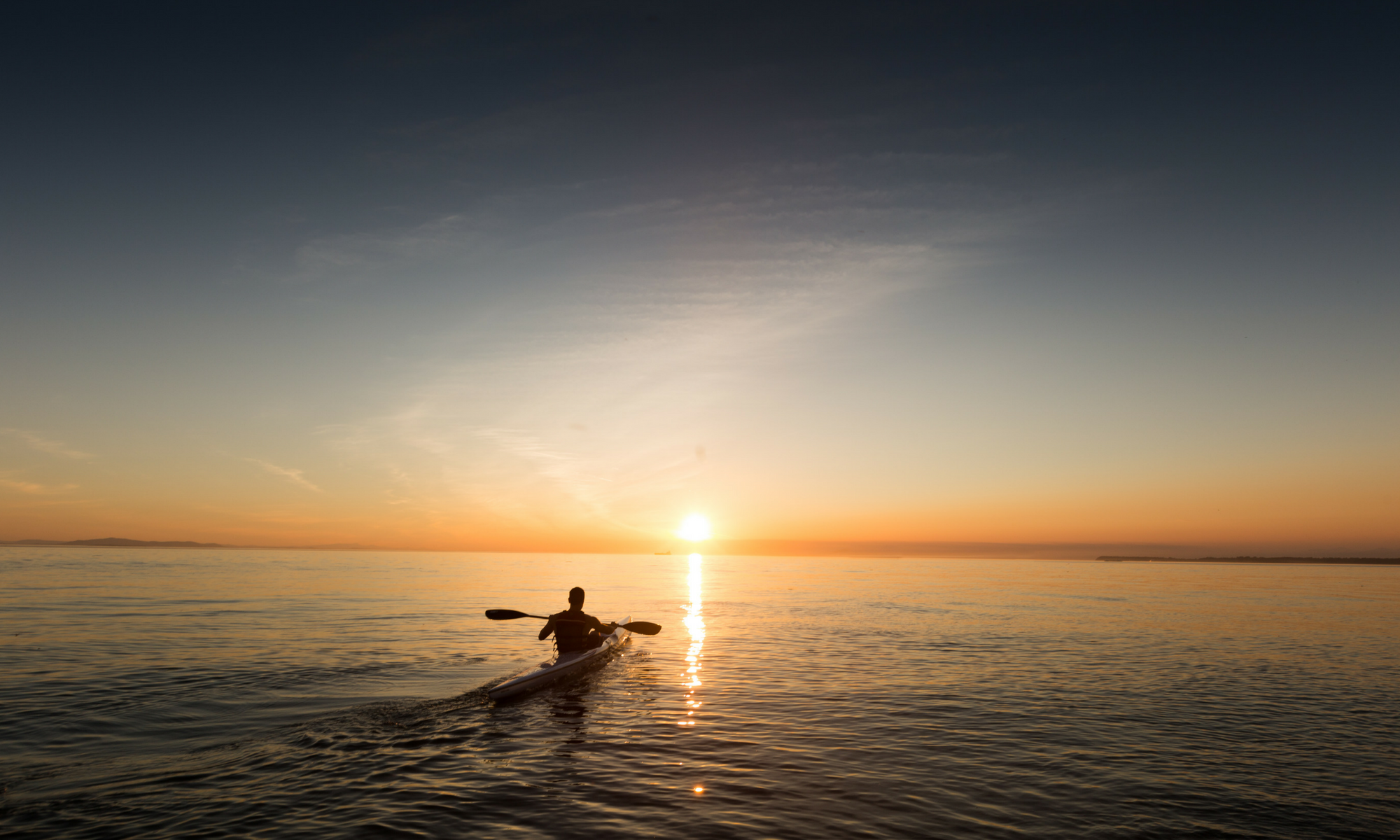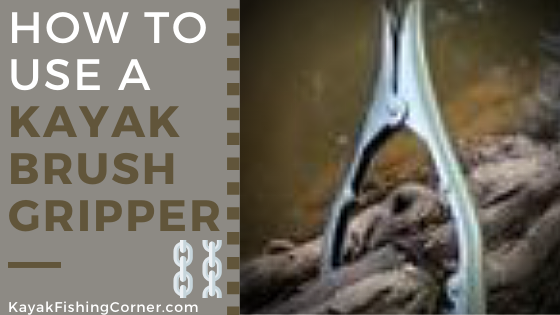Jump Ahead To:
HOW TO USE A KAYAK BRUSH GRIPPER – INTRO
Don’t know how to use a kayak brush gripper to hold your position on the current or against the winds? You should! This is the #1 most important piece of Kayak Fishing gear for keeping you in your desired fishing spot and we have written an Ultimate Guide on it here!
Read on to know everything you need to know about the kayak brush gripper and why it is such an importance Kayak Fishing accessory – regardless of your level of skill or experience!
How to use a Kayak Brush Gripper – Overview:

Please note: This post contains affiliate links. An affiliate link means that we may earn advertising/referral fees if you make a purchase through our links.
Shortcut to the Best Kayak Brush Gripper Review
With a kayak brush gripper, you can stay in your favorite spot for as long as you want despite high waves and strong winds. Kayak fishermen have to deal with swiftly flowing waters and variable winds quite frequently, and this is where a brush gripper comes in to play its role!
Therefore, I’ve developed this guide to address the concerns associated with various anchoring problems that the kayak fishermen have to deal with – and why a kayak brush gripper is the solution to your problem! Oh, and don’t worry, we have also suggested the Best Kayak Brush Gripper for your to consider!

In this post, you’ll find all those basic, yet important, details that you need to be aware of when buying and using a kayak brush gripper on your kayak fishing trips for all your surface anchoring needs!
This guide features a section on all the basics associated with a kayak brush gripper. Furthermore, there is a brief checklist that contains all the important steps that you need to take to set up and use your brush gripper correctly. After all, even the best brush gripper won’t do you very much good if you haven’t learned how to properly use it.

Besides that, I’ve provided you with a link to my recommendation in terms of brush grippers. By no means is it the ONLY top notch brush gripper on the market, but it is one that maintains the qualities necessary to make it a top of the line product for kayak fishermen of any level of skill or experience!
You will see that I have reviewed this particular brush gripper and have listed its merits and demerits to help you in making the right buying decision. All this information is available in the “My Experience” section!
How to use a Kayak Brush Gripper – Basics

Please Note: As an Amazon Associate, I earn from qualifying purchases.
Kayak anglers, as well as boaters and canoe users, can utilize a brush gripper to keep in place on flowing waters, even when combined with high winds! Therefore, you can use anything as anchor support for this purpose – that is one of the beauties of this particular type of tool! Brush, vegetation, docks, or any other form of limbs are good to go as long as they are stable and offer good rigidity.
Most grippers will work on a kayak measuring up to 25 feet in length depending upon the size and materials used in the construction of the tool. Most of these brush grippers came with a “fish-grip” and are coupled with spring-loaded tension. It means that with a stronger pull, the grip will also become tighter. Kind of like a Chinese Finger Trap!

The hold and stability associated with any particular gripper will also depend upon the rope that is attached to the brush gripper. Of course, a gripper is not designed to hold mud, so you can’t use it on the bare ground like you use when anchoring with traditional kayak anchors.
Brush grippers can also serve another purpose – adding to their versatility! You can use it to hold various other items and equipment. You can use it to hang a lantern while fishing in the evenings or string up a “dry bag” to keep your contents up and off the ground. Its kind of like a kayak paddle holder, only it “holds” your gear by stringing it up off of the ground!
A brush gripper is very lightweight in construction, and you can easily store it with the rest of your kayak fishing gear. This is a huge perk, in my opinion, because my kayak is already full to the top with different pieces of gear and fishing equipment. Anything that is lightweight, and takes up very little room, earns high marks with me due to the space that it saves me! More room to buy other kayak fishing gear – like the Best Kayak Paddle for Fishing!

There is no technical expertise required to use a brush gripper. Good news, right? It also doesn’t require much cleaning and maintenance, either. Even better news! Most of the brush grippers that you will find on the market have similar construction and design. But some of them do vary in terms of materials used and their durability. That’s why you need to be careful when evaluating one gripper against the next!
How to use a Kayak Brush Gripper

I’ve listed down all of the steps that you need to keep in mind before you start using a brush gripper. If you truly want to learn how to use a kayak brush gripper, you need to take into consideration the steps below AND the product specific instructions that are included in your gripper’s packaging!
- Take out your brush gripper from its packaging.
- Normally, you will find a brush gripper and a supporting line rope with it.
- The gripping tool will have a fish-like shape with a tension system, and usually, it is either made of metal or hard plastic.
- The rope is usually made of nylon with plastic fibers.
- Some line ropes do come with a hook or a ring for you to attach it to the gripping device.
- After securing the rope with the device, try it out by clipping it to vegetation that you can find nearby or dock it to any limb.
- With a good quality gripper, you will immediately notice a stringer pull on the rope.
- The grip will become tighter.
- Once you’ve become comfortable using the gripper, it’s time to take it on your trip.
- After using it, just wipe it with a dry cloth and store it away in a dry place.
- Make sure not to allow the gripper or the rope to be stored while wet, it should fully air dry first, helps preserve longevity!
Side Note: If you liked this “how to” guide, you may also like learning how to use kayak outriggers! Oh, and take a look at our post detailing all of the important features of the Best Kayak Brush Gripper!
How to use a Kayak Brush Gripper – Important Features

Materials
Different manufacturers use different materials to construct these gripping devices. Most of them use lightweight metals like aluminum because they are good to use with small boats, canoes, and kayaks.
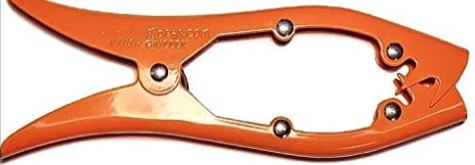
The heavy-duty steel is likely to be found with high-end gripping tools that are used to keep a hold on much larger boats. Plastic is also used, but these grippers are not very durable, and you need to stay away from them. Lightweight aluminum is very easy to carry and use. It also offers excellent durability because it is resistive to corrosion and rust. In fact, this kind of material is IDEAL for kayak fishing purposes!
Construction and Design
A gripping tool is not going to be very effective if it is not designed adequately. Therefore, the ideal choice here is to go for the fish-grip.

Such design features a fish-like shape, and some teeth are in-bent for a stronghold. This design makes the grip stronger when you pull the line rope. Some other designs are also available, but the “fish grip” design is the most effective and simple to use!
Length of the Line Rope
Some brush grippers also come with their line ropes pre-installed or ready to be installed. You just need to attach them to the gripper and start using it. Some of these ropes feature hooks and rings to attach with the gripper, while others require you just attach them with a knot.

These ropes are typically made of nylon that has plastic fibers in them. The length of these line ropes is important, and with a greater length, you will get more area coverage. Therefore, you need to make your choice according to the regions where you’re kayaking. For instance, if you are kayaking in a river or stream, you’ll likely want a longer rope to provide you more clearance from you anchoring point!
Size and Weight
Large-sized brush grippers are effective and can bear more weight. Makes sense, right? But they also add a lot to the overall weight of your gear!
A regular-sized brush gripper is good enough to use with fishing kayaks that are 25 feet and less in length (which is nearly every kind of fishing kayak, except possibly some tandem kayak models). So pick the right size and weight according to the kayak you take out to the fishing hole!
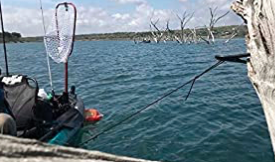
Larger brush grippers are more effective in high winds and strong currents because their gripping power is far superior to their smaller counterparts. Again plastic is not your friend here. You should really only consider aluminum gripping devices – you’ll be disappointed with the performance of the cheaper, plastic based alternatives! Also, if you are looking to save a few bucks in your kayak fishing purchases, be sure to check out the Best Kayak Paddle for the Money!
Learn how to stay comfortable in your fishing kayak for longer by using the Best Kayak Seat!
Buy the Best Kayak Brush Gripper
Based on my experience, the best kayak brush gripper in terms of value and reliability is the one that we have linked to above. This tool is very useful for you to hold kayaks of almost any length and weight – even when loaded up with your fishing gear!

This gripper comes with a 9 feet paracord. It helps increase your area coverage on the water with ease and the paracord is of sufficient strength to free you of any concerns about the line “snapping” under pressure. And with better coverage and line strength, you can catch your fish anywhere you want in those tight corners without being concerned about floating downstream!
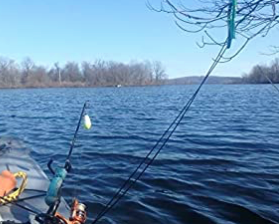
With force, this gripper will develop a stronger grip, thanks to the fish-shape and in-bent teeth, just like I mentioned in the Important Features section above. Remember, the more it is pulled upon, the tighter the teeth “clamp down” upon the anchoring point. Just like a Chinese Finger Trap!
And you don’t have to drop it into the water to blow your cover. This is precisely where a kayak brush gripper becomes handier to use when compared to other anchoring devices. The fish will not scare away, and you will return home with a lot in your tank.
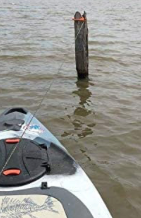
Also, don’t worry about changing your position to align with the current or winds. The hold of the gripper stays strong so you can conveniently change your position according to the drift. Sometimes you’ll want to point the bow upwind, and then rotate to face it downwind – this chance of direction won’t be prohibited by the use of the gripper!
My Experience

The showcased kayak brush gripper has certainly exceeded my expectations, and I have used it on several kayak fishing trips as of recent. I found it very lightweight due to its aluminum construction, and the fish-grip tension that it features is tremendous. It held on to any limb that I used for anchoring, and it never lost its grip.
I didn’t find any difficulties in maintaining and storing it with my other kayak gear. I will typically store the gripper with the rope wrapped into a neat loop and then tucked away right next to the gripper in my kayak’s hull. This takes up very, very little room – about the room of one sandal or one small bottle of Gatorade!

Moreover, you can use it for various other outdoor activities too. I use it all the time to hang various items, especially lights during camping when I am on a multi-day kayak fishing trip (which I would highly suggest). And of course, I don’t need to drop my stuff (specifically an anchor) into the water and risk scaring away the fish – in this respect, the kayak brush gripper is kind of like a “surface anchor”.

The only feature I wish could be better is the rope’s length. It only comes with a nine-foot-long rope. I mitigated this problem by purchasing an additional 25 feet of paracord at the hardware store down the street. I simply tied it on to the existing rope, and away I went. Problem solved! If you do this, make sure you use paracord and not some cheaper alternative!
Pros
- Lightweight and durable aluminum construction.
- 9-foot long line rope made of nylon and plastic fibers.
- Best suited to hold kayaks up to 22 feet long (even when fully loaded).
- Holds other types of kayak fishing or other gear when not in use as a surface gripper!
- Very easy to use, maintain, and store away.
Cons
- With only a 9-foot long rope, you won’t get the area coverage besides those tight spots. Mitigate by purchasing additional paracord at the local hardware store!
Conclusion

So there you have it, everything you need to know about how to use a kayak brush gripper. I hope you found what you’re looking for! I can’t think of anything that we DID NOT cover but, of course, should you have any questions or if you’d like any additional detail, please just write on the Comments board below and we’ll get back with you quickly!
In the end, I would like to mention that you SHOULD ABSOLUTELY choose a gripper that handles both the currents and winds well. Don’t get gripper that is going to “slip off” when subjected to a little bit of these kinds of external pressures. Make sure the vegetation, post, limb, dock, etc., that you are using to anchor your kayak is stable enough to hold the position of your kayak (i.e.: that it won’t snap off. A gripper is only as good as the point to which it is secured)!
Comments

Did you know how to use a kayak brush gripper before you read this article? Did you know that such a tool even existed? They are becoming more and more common on the kayak fishing scene and for good reason! Perhaps you have even used the model that we have showcased above and want to share some feedback on it? Whatever the reason, please share your thoughts and opinions with us by posting in the Comments section below. We read and reply to every comment and LOVE interacting with the Kayak Fishing Community!
